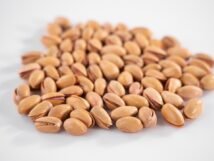Losing belly fat is a goal that many people strive for, and for good reason. Excess belly fat not only affects our appearance, but it can also have serious implications for our health. Belly fat, also known as visceral fat, is located deep within the abdominal cavity and surrounds vital organs such as the liver, pancreas, and intestines. This type of fat is metabolically active and produces hormones and chemicals that can increase the risk of various health conditions, including heart disease, type 2 diabetes, and certain types of cancer.
In this article, we will explore the different types of belly fat, the health risks associated with excess belly fat, and various strategies to help you lose belly fat. We will delve into the role of diet, hydration, exercise, sleep, and lifestyle changes in slimming your stomach. Additionally, we will discuss the importance of consistency and motivation in achieving your belly fat loss goals.
Key Takeaways
- Belly fat is stored in two types: subcutaneous and visceral.
- A diet high in fiber and protein can help reduce belly fat.
- Staying hydrated can aid in weight loss and reduce belly fat.
- Exercise, particularly cardio and strength training, can help reduce belly fat.
- Consistency and motivation are key to achieving a slimmer stomach.
Understanding the Basics of Belly Fat
Before we dive into strategies for losing belly fat, it's important to understand the different types of belly fat and the health risks associated with excess belly fat. There are two main types of belly fat: subcutaneous fat and visceral fat. Subcutaneous fat is located just beneath the skin and is the type of fat that you can pinch. While having excess subcutaneous fat can be undesirable from an aesthetic standpoint, it is not as harmful to your health as visceral fat.
Visceral fat, on the other hand, is located deep within the abdominal cavity and surrounds vital organs. This type of fat is metabolically active and produces hormones and chemicals that can increase the risk of various health conditions. Excess visceral fat has been linked to an increased risk of heart disease, type 2 diabetes, insulin resistance, high blood pressure, certain types of cancer, and metabolic syndrome.
The Role of Diet in Slimming Your Stomach
Diet plays a crucial role in losing belly fat. Certain types of foods can contribute to the accumulation of belly fat, while others can help reduce it. Foods that are high in added sugars, refined carbohydrates, and unhealthy fats are more likely to contribute to belly fat. These include sugary beverages, processed snacks, white bread, pasta, and pastries.
On the other hand, a balanced diet that is rich in whole foods can help you lose belly fat. Whole foods are minimally processed and include fruits, vegetables, whole grains, lean proteins, and healthy fats. These foods are nutrient-dense and provide your body with the necessary vitamins, minerals, and antioxidants to support overall health and weight loss.
To incorporate healthy foods into your diet, start by focusing on whole foods and minimizing processed foods. Aim to fill half of your plate with fruits and vegetables at each meal. Choose whole grains such as brown rice, quinoa, and whole wheat bread instead of refined grains. Include lean proteins such as chicken, fish, tofu, or legumes in your meals. And don't forget about healthy fats like avocados, nuts, and olive oil.
The Importance of Hydration in Losing Belly Fat
In addition to a balanced diet, hydration is also important for losing belly fat. Drinking enough water throughout the day can help reduce belly bloating and promote weight loss. When you're dehydrated, your body tends to retain water, which can lead to bloating and a puffy appearance.
Drinking water can also help curb your appetite and prevent overeating. Sometimes we mistake thirst for hunger and end up eating more than we actually need. By staying hydrated, you can better differentiate between hunger and thirst cues.
To stay hydrated throughout the day, aim to drink at least 8 cups (64 ounces) of water per day. Carry a water bottle with you wherever you go and sip on it regularly. You can also incorporate other hydrating beverages such as herbal tea, infused water, or unsweetened beverages like sparkling water or coconut water.
The Role of Exercise in Reducing Belly Fat
While diet is important for losing belly fat, exercise is equally crucial. Regular physical activity can help burn calories, increase metabolism, and promote weight loss. When it comes to losing belly fat, a combination of cardiovascular exercise and strength training is recommended.
Cardiovascular exercise, also known as aerobic exercise, is any activity that gets your heart rate up and increases your breathing rate. This type of exercise helps burn calories and fat, including belly fat. Some examples of cardiovascular exercises include running, cycling, swimming, dancing, and brisk walking.
To incorporate cardio into your routine, aim for at least 150 minutes of moderate-intensity aerobic activity or 75 minutes of vigorous-intensity aerobic activity per week. You can break this down into smaller sessions throughout the week if needed. Find activities that you enjoy and make it a habit to include them in your routine.
The Benefits of Cardiovascular Exercise for Reducing Belly Fat

Cardiovascular exercise offers numerous benefits when it comes to reducing belly fat. Not only does it help burn calories and fat, but it also improves heart health, increases lung capacity, boosts mood, and reduces stress levels.
Different types of cardio exercises offer varying levels of intensity and impact on the body. High-intensity interval training (HIIT) is a popular form of cardio that involves short bursts of intense exercise followed by periods of rest or lower intensity exercise. HIIT has been shown to be effective in reducing belly fat and improving overall fitness levels.
Other forms of cardio exercise include steady-state cardio, such as jogging or cycling at a moderate pace for an extended period of time, and low-impact exercises like swimming or using an elliptical machine. The key is to find activities that you enjoy and that you can sustain over time.
The Importance of Strength Training for Slimming Your Stomach
While cardiovascular exercise is important for burning calories and reducing overall body fat, strength training is equally important for slimming your stomach. Strength training helps build lean muscle mass, which in turn increases your metabolism and helps burn more calories throughout the day.
In addition to increasing metabolism, strength training also helps tone and tighten the muscles in your abdomen, giving you a flatter and more defined stomach. Some examples of strength training exercises that target the abdominal muscles include planks, crunches, Russian twists, and leg raises.
To incorporate strength training into your routine, aim for at least two to three sessions per week. Focus on exercises that target all major muscle groups, including the abdomen, legs, arms, back, and chest. You can use free weights, resistance bands, or your own body weight for resistance.
Simple Lifestyle Changes to Help You Lose Belly Fat
In addition to diet and exercise, making small lifestyle changes can also help you lose belly fat. These changes may seem minor, but when implemented consistently over time, they can have a significant impact on your overall health and weight loss efforts.
One simple lifestyle change you can make is to prioritize sleep. Lack of sleep has been linked to weight gain and an increased risk of obesity. When you're sleep-deprived, your body produces more ghrelin, a hormone that stimulates hunger, and less leptin, a hormone that suppresses appetite. This can lead to increased cravings and overeating.
To improve your sleep habits, aim for at least seven to nine hours of quality sleep per night. Establish a regular sleep schedule by going to bed and waking up at the same time each day. Create a relaxing bedtime routine that includes activities such as reading a book, taking a warm bath, or practicing relaxation techniques.
The Role of Sleep in Reducing Belly Fat
In addition to the impact on appetite hormones, sleep also affects belly fat through other mechanisms. Lack of sleep can disrupt the balance of hormones that regulate hunger and satiety, leading to increased cravings for high-calorie, sugary foods. It can also increase insulin resistance, which can contribute to the accumulation of belly fat.
To improve your sleep quality, create a sleep-friendly environment by keeping your bedroom cool, dark, and quiet. Avoid electronic devices such as smartphones, tablets, and laptops before bed, as the blue light emitted by these devices can interfere with your sleep-wake cycle. Instead, engage in relaxing activities such as reading a book or practicing deep breathing exercises.
How to Stay Motivated to Achieve Your Belly Fat Loss Goals
Staying motivated is crucial when it comes to achieving your belly fat loss goals. It's important to remember that losing belly fat takes time and consistency. Set realistic goals for yourself and celebrate small victories along the way.
One strategy for staying motivated is to find an accountability partner or join a support group. Having someone to share your journey with can provide encouragement and help keep you on track. You can also track your progress by taking measurements or photos of your stomach regularly. Seeing tangible results can be a great motivator.
Another way to stay motivated is to reward yourself for reaching milestones or sticking to your routine. Treat yourself to something you enjoy, such as a massage, a new workout outfit, or a day off from exercise. Just make sure that your rewards align with your overall health goals.
The Importance of Consistency in Achieving a Slimmer Stomach
Consistency is key when it comes to losing belly fat. It's not enough to make healthy choices occasionally; you need to make them consistently over time. This means sticking to your diet and exercise routine even when you don't feel like it or when life gets busy.
One way to stay consistent is to plan ahead. Set aside time each week to meal prep and plan your workouts. This will help you stay organized and ensure that you have healthy options available when hunger strikes. It's also helpful to have a backup plan for when things don't go as planned. For example, if you can't make it to the gym, have a home workout routine that you can do instead.
Another strategy for staying consistent is to find activities that you enjoy. If you dread going to the gym, try finding alternative forms of exercise that you actually look forward to. This could be dancing, hiking, playing a sport, or taking a group fitness class. When you enjoy what you're doing, it's easier to stay consistent.
Losing belly fat is not just about looking good; it's about improving your health and reducing your risk of chronic diseases. By understanding the basics of belly fat, incorporating a balanced diet, staying hydrated, engaging in regular exercise, making small lifestyle changes, prioritizing sleep, staying motivated, and being consistent, you can achieve a slimmer stomach and improve your overall well-being.
Remember that losing belly fat takes time and effort. Be patient with yourself and celebrate every step in the right direction. With dedication and perseverance, you can achieve your belly fat loss goals and enjoy a healthier, happier life. So start implementing these tips today and take the first step towards a slimmer stomach.
If you're looking to slim your stomach in just 7 days, you might be interested in learning about the impact of weight loss and diabetes drugs on your journey. According to a recent article on the USHRK blog, these drugs can cost significantly more in the US compared to other countries. Understanding the financial aspect of weight loss can help you make informed decisions about your health and budget. To read more about this topic, check out the article here.
FAQs
What is the best way to slim my stomach in 7 days?
There is no one-size-fits-all answer to this question as everyone's body is different. However, a combination of healthy eating, regular exercise, and reducing stress can help slim your stomach in 7 days.
What foods should I eat to slim my stomach?
Foods that are high in fiber, protein, and healthy fats can help you slim your stomach. Examples include fruits, vegetables, lean proteins, nuts, and seeds.
What exercises can I do to slim my stomach?
Exercises that target your core muscles, such as crunches, planks, and bicycle crunches, can help slim your stomach. Cardiovascular exercises, such as running or cycling, can also help burn fat.
How much water should I drink to slim my stomach?
Drinking plenty of water can help flush out toxins and reduce bloating, which can help slim your stomach. Aim to drink at least 8 glasses of water per day.
Can stress affect my ability to slim my stomach?
Yes, stress can affect your ability to slim your stomach. When you are stressed, your body produces cortisol, which can lead to weight gain and bloating. Practicing stress-reducing activities, such as yoga or meditation, can help reduce cortisol levels and slim your stomach.















